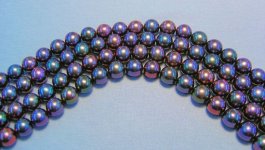C
Casey.R
Guest
I just bought a round tahitian pearl pendant and baroque tahitian pearl earrings. I called ahead and spoke to someone there and said that if they had it I would really like a good peacock color. They didn't say they couldn't do it. Anyway I got the pearls today and They are nice and smooth and pretty, also I like the design, and the pendant has what I think is a probably pretty nice peacock I'm not so sure about the earrings though because I almost have to get them into certain lighting to see it. They mostly just look grey to me and I feel I have a pretty good eye.
I'm going to use this ebay pearl as an example because in the pictures when you scroll down there are some nice colors happeneing in this pearl. I don't think my pearls quite have this type of color play even though they are very beautiful smooth etc. Not even the pendant.
So whats the deal is the color supposed to be real subtle or stand out right away.
p.s I must say I do already prefer them to my akoyas.
I'm going to use this ebay pearl as an example because in the pictures when you scroll down there are some nice colors happeneing in this pearl. I don't think my pearls quite have this type of color play even though they are very beautiful smooth etc. Not even the pendant.
So whats the deal is the color supposed to be real subtle or stand out right away.
p.s I must say I do already prefer them to my akoyas.


